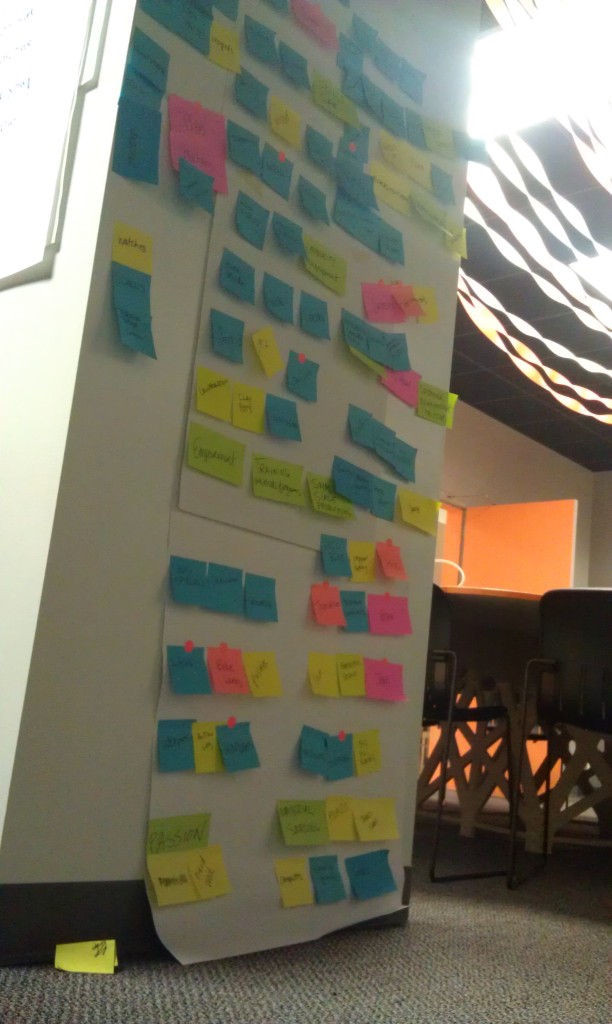Day 7 (6/25) Reflection
After we created our POV statements we moved into the ideation phase on day 7. The ideation phase is now used to parse out solutions for the POV’s that were created. There is a whole process involved, and we accomplished this process at D:hive with Andy (D:hive) and Megan (Little Things Labs).
First we created “How Might We…” statements where we introduced the problem our POV is facing. My example, “How might we increase safety and security in makerspaces?”
After creating “How Might We..” statements, we took five minutes to brain dump any solutions we could think of for anyone’s HMW statement. No matter the idea, just put it on a post it and stick it under the statement.
Next we took stickers and marked the ideas we liked the most. This is just to help us go back and quickly reference ideas.
Then we moved to forcing connections. This is a rapid topic generation method, where every 3 minutes you move to another topic to really work the brain. We moved to a blank space on the wall and, on posts it’s, wrote as many things as we remembered observing during our time in the field. Anything from as simple as “jeans” to “driven.” It didn’t matter. After that we moved to writing any re occurring themes we saw, like “passion.” Then we wrote down platforms we know of, both physical platforms or abstract platforms like a train platform or Facebook platform. Finally we wrote down what manufactured goods we purchased recently.
After writing all those words down, we then made connections. We took three words, didn’t matter what words, but the goal was to make connections with the three words. For example I put “Wood,” “Wine,” and “library” library together. A wooden wine library would be pretty cool.
When we were done with that we were tasked with picking only one connection we thought was a cool idea to sketch. I chose “old buildings,” “fabric,” and “beautiful group kitchens.” I drew some napkin sketches of old buildings draped/design in fabric and then drew a city fabric to dive deeper into the statement. It was a fun exercise
After lunch we went back to the ideas that we both drew about and wrote all over the walls and picked out another three. We picked one that was exciting to us, one that our user would really benefit from, and one that we felt was really innovative and not a solution out in the market place. This gave us 21 ideas (7 people x 3 ideas each).
From here we were tasked with forming 3 teams that each liked a few of the ideas that were now on the bard. These teams were to pick three ideas, and come up with a pitch to either combine the ideas into one major solution or pick the best solution out of the three. The pitch was to try and sell the solutions to each other so we could begin working on our solution for the rest of the project. We also wanted to narrow down to 2 teams, so we were also trying to get buy in from others to join the team.
Ultimately, two teams combine their ideas naturally and we didn’t have to do any informal pitching, but we did come up with our solutions.
Our Solution:
We saw the maker spaces were set back from most of the community and felt that more people could become makers (at any level) if the setting was right. We felt a coffee shop/bar would be a great setting where people could still use the same principles that makerspaces offer but show people that making is easy, fun and extremely accessible.
So we came up with a Drink.Design.Make.Share space (this is not our title, just our working “mission”). Part of the space would be designated for light to medium making (like weaving or bike repairs), another part would be used for designing/ideating, and the other parts of the space would have a bar for socializing and drinking in order to share ideas.
A accessible multifunctional community space for curious people that want to learn and work with their hands.
See our video here:

